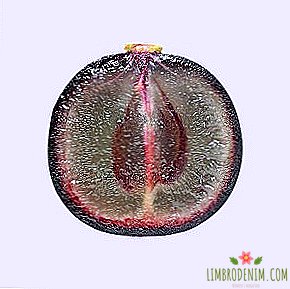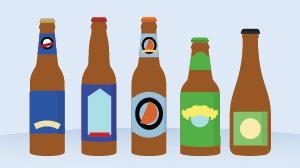Falsehood: What's Wrong With Split Nutrition Theory
Food rituals largely determine our civilization. A rational man has studied for thousands of years to combine products and combine their taste - given their accessibility, their experience, ideas about the world around them and religious canons. National cuisines and food culture in different countries are largely determined by the very complex rules of combinations - but we tried to understand this issue from the point of view of health. Is there a basis for the theory of separate nutrition and is it still possible to combine carbohydrates with fats?

Who came up with the theory of separate power
One of the theorists of nutrition, Herbert Shelton, at the beginning of the last century invented a complex system of combination of products and marked the beginning of a system of separate feeding. Shelton divided all products into seven categories: proteins, starchy foods, fats, “acidic” fruits, “half-acid” fruits, non-starchy and green vegetables, and melons and gourds. He believed that digestive enzymes - proteins that are responsible for the digestion of food - work most efficiently with only one category of food at a time. Shelton argued that some combinations of products are not absorbed by the body and may even lead to diseases.
According to the author of the theory, far from the basic concepts of chemistry and physics, for the digestion of starchy foods need an alkaline environment, and proteins - sour. When these two classes are combined, the environment is supposedly neutralized, the digestion process stops, and the food "rots" in the body, causing harm to it.
The surgeon William Hay was the successor of the ideas of separate feeding - by changing the structure of food intake and quitting smoking, he lost much weight and began to feel better. Based on his experience, Haye developed a diet by dividing food into three categories: “acidic” fruit and “acid”, “acidic” proteins, and “alkaline” carbohydrates. According to his theory, it is necessary to limit the "acid" products, as they allegedly "acidify the body" - and use "alkaline" in unlimited quantities, because they "neutralize" the negative effects of "acidification" of the body. Approximately on the same principles other models of a separate food are under construction also. They prescribe and the rejection of water during a meal - supposedly water interferes with digestion.
Interestingly, Shelton was at the roots of another pseudo-scientific direction - “natural hygiene”, calling for using only “natural” ways of dealing with the disease, including refusing medications. At the same time, Herbert Shelton did not have a medical education, was several times prosecuted and even was in prison for medical practice without a license, in one case leading to death. Hay's methods were also recognized as unscientific (in addition to the food theory, he called for refusing vaccination and using aluminum cookware) and received condemnation in professional circles - but this did not prevent his ideas from becoming popular among Hollywood stars and launching a whole fashion, the fruits of which we see by this day.

How does digestion actually occur?
Although at first glance, such theories look like scientific - in fact they have nothing to do with biology and chemistry. The effectiveness of the enzymes really depends on many factors - it is not only the pH (level of acidity), but also the temperature and concentration of both the enzyme itself and the substances it processes. The process of digestion begins in the mouth, where starch is broken down by the action of the enzyme amylase. In the oral cavity there is an enzyme that digests fats (lingual lipase), although its effect is limited. In addition, food is ground by teeth and moistened with saliva - this allows it to easily pass further along the gastrointestinal tract and simplifies the work of other enzymes. The environment in the oral cavity is neutral, and the pH is from 6.0 to 7.0.
Passing through the esophagus, chopped food enters the stomach - a vessel with extremely low pH (1.0-3.0), that is, with very high acidity. Cells of the stomach walls secrete hydrochloric acid, creating an extremely aggressive environment. Hydrochloric acid "eats away" everything in its path, primarily proteins - they lose their normal structure and become more accessible for digestion and assimilation. Also, hydrochloric acid partially protects us from microorganisms that can get along with food, reducing their activity. In addition, lipase works in the stomach, splitting fats, and pepsins are enzymes that act on proteins.
To ensure that gastric juice containing hydrochloric acid acts only on food, the walls of the stomach are protected by special mucus. At the exit of the stomach into the small intestine, a neutralizing fluid, bicarbonate, is also released. It is an alkali that neutralizes the acid in semi-digested food; in the small intestine, the pH rises to neutral (7.0-8.0) and further splitting of proteins, fats and carbohydrates occurs, and then the absorption of their components. The frequency of gastric emptying, the secretion of enzymes and gastric juice is precisely controlled by the nervous system — this takes into account incentives such as the taste and smell of food, the individual components of food, and signals sent from one part of the digestive tract to others. Enzymes of different departments "turn off" when they move from the usual environment to another - for example, the pepsins of the stomach cease to act, reaching the small intestine.

What is wrong with split power models
It is obvious that theories of separate nutrition simply do not correspond to reality - after all, the use of food does not lead to any acidification or alkalisation of the organism as a whole. The ideas that certain foods stimulate the body to excrete acids and alkalis are erroneous, and mixing them leads to neutralization and subsequent decay. In fact, food, entering the body, turns into a mass, the acidity of which varies from one part of the gastrointestinal tract to another - these processes are maximally "unified" for any food suitable for consumption. Our body is adapted to digest and absorb any combination of products. In addition, it is proved that for weight loss, separate nutrition is not more effective or beneficial than just a balanced diet.
This applies not only to separate meals, but also combinations of different products in principle. It is difficult to believe in it, but the rules that you can not drink milk with cucumbers or seize beer with ice cream are a common myth. If you mix milk and lemon juice, then the milk will turn sour - but the resulting liquid will not be harmful to eat. Another thing is that taste and general appearance can be unpleasant - apparently, this is the reason for the harmfulness. In the scientific literature there is no justification for banning any combination of foods in the diet. Exceptions can only be specific for specific people, for example, due to intolerance of certain products.
Photo: pioneer111 - stock.adobe.com, aleoks - stock.adobe.com, nortongo - stock.adobe.com





